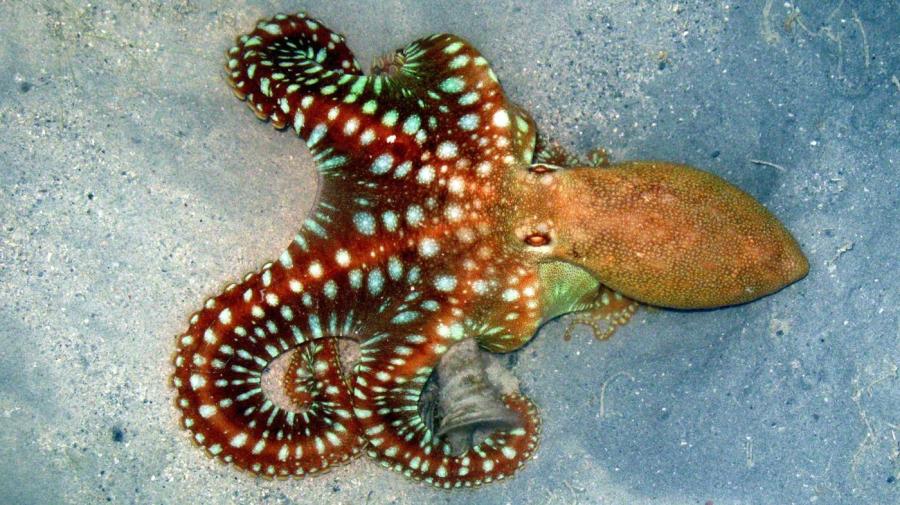
The average giant octopus grows to a length of about 16 feet from the top of its body to the tip of its arms and weighs between 70 and 110 pounds, making it the world’s largest octopus species. Fun Facts About Giant Pacific OctopusesĬharacteristics & Appearance Weight & Length.What Does the Giant Pacific Octopus Eat?.Where Does the Giant Pacific Octopus Live?.Assisted or artificial respiration may be needed.Stay with the person, reassure them and keep them still.Pressure immobilisation bandages should be applied, using a broad pressure bandage and splint on the affected limb.
/cook-and-keep-octopus-tender-2018813-Step_1-5ba3a65246e0fb00506d0c25.jpg) Dial 000 for an ambulance – medical help is needed as fast as possible. How do you treat a blue ringed octopus bite? Despite their small size, just one blue- ringed octopus bite can produce enough enough venom to kill twenty-six adults. Herein, has anyone survived a blue ringed octopus bite?Ī fisherman has shared his miraculous tale of survival after he was bitten by a blue- ringed octopus - one of the most venomous creatures in the ocean with enough poison to kill more than 20 people. These are small octopuses which, when alarmed, develop vivid blue to purple rings on the body and tentacles. There are two species, found in all Australian coastal waters, often commonly. Similarly, is there antivenom for blue ringed octopus? There is no antivenom. If you' re bitten by a blue- ringed octopus, the venom causes muscle numbness (other symptoms include nausea, vision loss or blindness, loss of senses and loss of motor skills), and ultimately muscle paralysis - including the muscles needed for humans to breathe.
Dial 000 for an ambulance – medical help is needed as fast as possible. How do you treat a blue ringed octopus bite? Despite their small size, just one blue- ringed octopus bite can produce enough enough venom to kill twenty-six adults. Herein, has anyone survived a blue ringed octopus bite?Ī fisherman has shared his miraculous tale of survival after he was bitten by a blue- ringed octopus - one of the most venomous creatures in the ocean with enough poison to kill more than 20 people. These are small octopuses which, when alarmed, develop vivid blue to purple rings on the body and tentacles. There are two species, found in all Australian coastal waters, often commonly. Similarly, is there antivenom for blue ringed octopus? There is no antivenom. If you' re bitten by a blue- ringed octopus, the venom causes muscle numbness (other symptoms include nausea, vision loss or blindness, loss of senses and loss of motor skills), and ultimately muscle paralysis - including the muscles needed for humans to breathe. 
This is because they are venomous not poisonous!Īlso to know is, what happens if you get bitten by a blue ringed octopus? Poison – Unlike some marine species, which are poisonous when eaten, you don't have to eat a blue ringed octopus for it to hurt you.


/cook-and-keep-octopus-tender-2018813-Step_1-5ba3a65246e0fb00506d0c25.jpg)



 0 kommentar(er)
0 kommentar(er)
